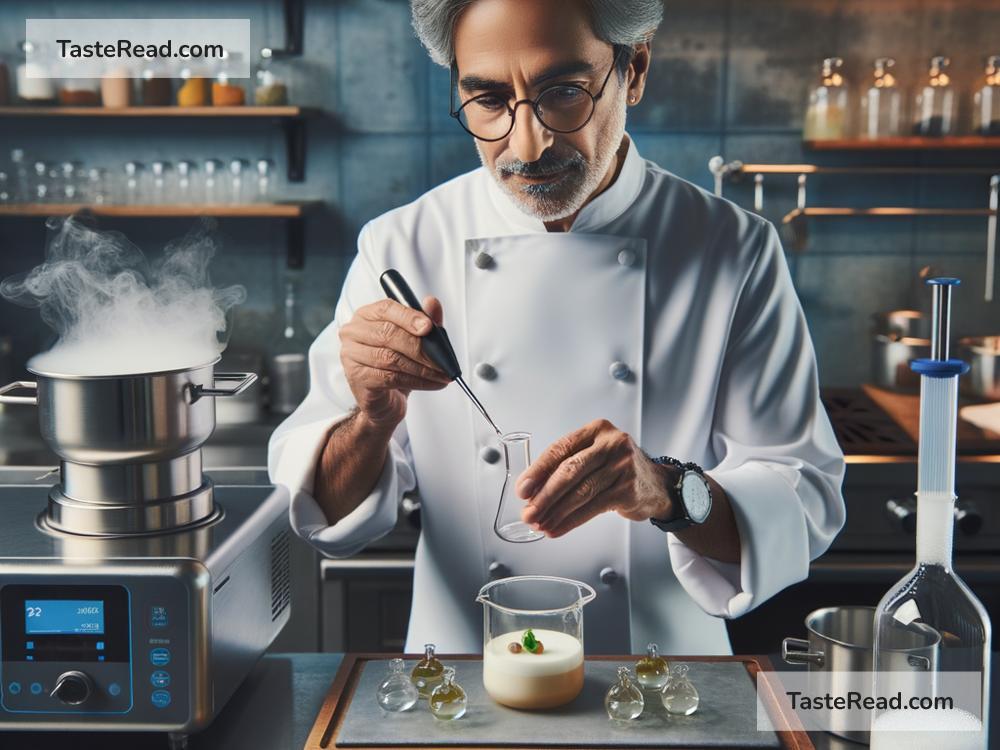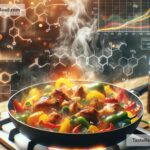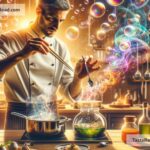The Science of Cooking with Chemical Knowledge: Techniques and Tips
Cooking is fascinating. It’s not just about mixing ingredients and heating them; it’s a form of science, where chemical reactions play a central role. Knowing a bit about the chemistry behind food can help you cook tastier meals, avoid common mistakes, and even experiment with new recipes. In this blog, we’ll dive into the science of cooking in simple terms and explore some techniques and tips to take your culinary skills to the next level.
Understanding the Basics: What Is Food Chemistry?
Food is made up of molecules like carbohydrates, proteins, fats, and water. When you cook, you’re altering these molecules. Heating, cooling, mixing, or adding specific ingredients can trigger chemical reactions. These reactions are what give food its texture, flavor, and appearance.
For example:
– Proteins in meat become tender or caramelized when heated.
– Carbohydrates in bread and pastries create that delicious golden crust through a process called the Maillard reaction.
– Fats add richness and smoothness to dishes.
– Water helps in boiling, steaming, and controlling the texture of food.
Once you understand these building blocks, cooking becomes less of a mystery and more of an exciting experiment.
Key Cooking Techniques Explained with Chemistry
Let’s look at some common cooking techniques and the science behind them.
1. Browning (The Maillard Reaction)
Ever wonder why grilled meat or toasted bread tastes so much better? This is thanks to the Maillard reaction. When proteins and sugars in food combine under high heat (above 285°F/140°C), they produce new flavorful molecules, creating browning and a savory, nutty aroma.
Tips:
– Dry the surface of meat before grilling or frying to enhance browning.
– Use methods like roasting or broiling for foods where flavor from browning is key.
2. Boiling and Steaming
Boiling and steaming use water to cook food evenly. When water is heated to 212°F (100°C), it transforms into steam. Steam can gently cook food, preserving nutrients and flavors. Steaming is especially good for vegetables.
Tips:
– Add salt when boiling pasta—it raises the boiling point slightly for better texture and flavor.
– To preserve nutrients, avoid overboiling vegetables; steam them instead.
3. Fermentation
Fermentation is the process where microorganisms like yeast and bacteria convert sugars into alcohol or acids. This creates flavors that are tangy, sour, or slightly sweet. Fermentation is the basis of foods like yogurt, bread, wine, and kimchi.
Tips:
– Use room temperature for fermenting bread dough for more complex flavors.
– Experiment with fermented foods to add depth to dishes.
4. Emulsification
Oil and water don’t usually mix, but emulsification helps combine them into creamy sauces, like mayonnaise or salad dressings. It works by adding an emulsifier (like egg yolks or mustard) that binds oil and water molecules together.
Tips:
– Whisk slowly while adding oil to create a stable emulsion.
– Chill emulsified sauces to prevent separation.
5. Caramelization
Caramelization is when sugars are heated and break down to create a rich, sweet flavor and amber color. It’s the key to making caramel, roasted vegetables, or even golden onions.
Tips:
– Use medium heat to control caramelization without burning.
– Stir frequently when caramelizing sugars to avoid uneven cooking.
6. Freezing and Cold Cooking
Some foods don’t require heat to “cook.” Techniques like curing with salt or using acid (in ceviche) change the structure of proteins, making them edible without heat. Freezing can also be used to create interesting textures, such as in ice cream or frozen fruit.
Tips:
– Experiment with freezing fruits to enjoy refreshing, sweet treats.
– Use acidic marinades to “cook” proteins like fish.
Tips for Better Cooking Using Chemistry
With these techniques in mind, here are practical ways to use chemistry for tastier results:
-
Control Temperature Precisely
Temperature determines the chemical reactions in cooking. Overheating can dry out or burn food, while underheating leaves food raw. Invest in a food thermometer to cook proteins like chicken or steak perfectly. -
Experiment with Texture
Think about how you can manipulate cooking methods to create different textures. For example, use cornstarch to thicken sauces (it helps trap water molecules) or give baked goods a flaky texture by chilling butter before mixing. -
Balance Flavors
Chemistry helps us understand how flavors interact. Sweet, salty, sour, bitter, and umami all balance each other. Add sugar to cut bitterness or salt to heighten sweetness. -
Use Fresh Ingredients
Fresh ingredients contain fewer degraded molecules, leading to better reactions during cooking. Refrigeration slows down chemical changes, preserving food quality. -
Don’t Fear Seasoning
Salt changes the structure of proteins in meat, enhancing tenderness and flavor. Spices add chemical compounds that stimulate taste buds or create heat, like capsaicin in chili peppers. -
Understand Baking Chemistry
Baking is especially dependent on chemical reactions. Baking powder releases carbon dioxide gas, causing dough to rise. Be precise with measurements to create a consistent result every time.
Cooking Is Fun Science!
Cooking is like conducting experiments, but the best part is getting to enjoy your work once it’s done! By understanding the chemistry behind techniques like browning, steaming, and emulsification, you can elevate your cooking game and impress your family and friends.
So next time you’re in the kitchen, think of yourself as a scientist with a spatula. Stay curious, try new methods, and don’t be afraid to make mistakes. After all, science—and cooking—are all about learning!
Happy cooking!


